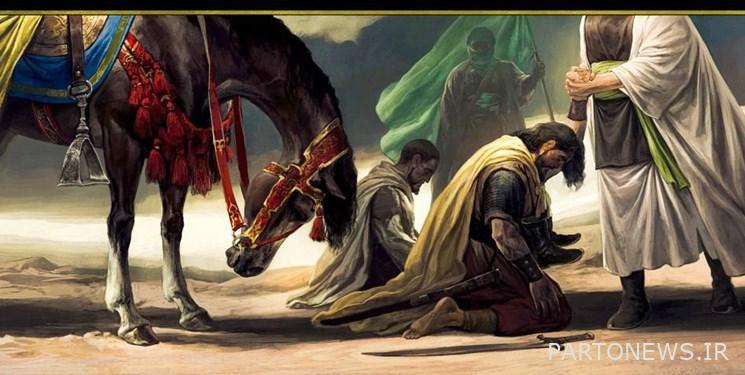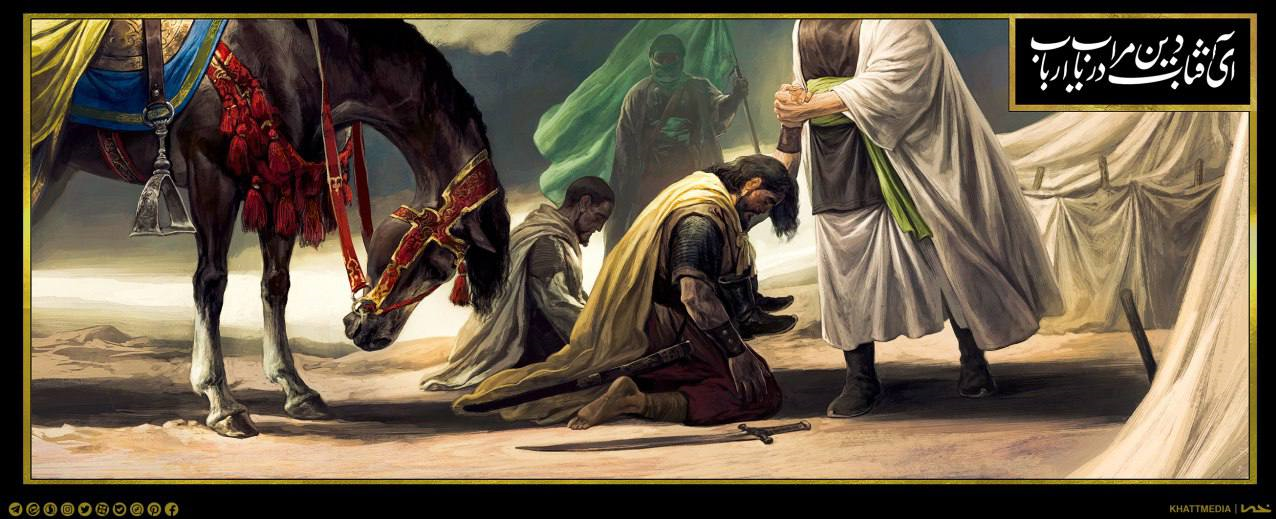Imam Hussain (pbuh) takes everyone’s hand / Ruhol Amin: The mural is a representation for us

According to Fars news agency, at the beginning of the month of Muharram, the newest mural of Waliasr Square in Tehran with a design by Hassan Rohul Amin has been unveiled. In this work of art, we see Imam Hussain (AS) kneeling in front of them and his hands are in Imam’s hands.
For several years, Hasan Rohol Amin’s Ashura and religious images have been seen in religious groups and in the city. What makes his works special is the pleasant feeling that is created in the audience by seeing his paintings.
In his latest work, Ruhol Amin refers to the “help and arrest” of Imam Hussain (a.s.) and to express this, he pointed to the subject of Har’s repentance to say that these hands are open even to Har. Also, in the corner of this design, the slogan “O Aftab Din, Mera Daryab Arbab”, which is a verse from a praise piece, is carved, and its content is also a demand for arrest by the Imam (AS).
The choice of Har as one of the important characters present in the Karbala event shows an image of Imam Hussain’s (AS) guiding light and lifeboat. Hur stood in front of the Imam and closed the water on his army, but at the last moment he was saved and by repenting and turning to the Imam, he received the open arms of Abu Abd Allah (AS). In fact, the new painting of Roohul-Amin has one main message, and that is the existence of Imam Hossein (AS) as the source of opening and salvation for all people.
Another point in the Muharram mural of Waliasr Square (AS) can be the imam’s personal dialogue with Har, which happens without an intermediary despite the presence of the soldiers, and the imam himself appears in front of Har and takes his hand.
In his works, Rohol Amin portrays his inner feelings by using the combination of images and appropriate coloring and engages the mind of his audience in a clear and artistic way. This closeness to the effect and conveying the concept in a clear way originates from inner feelings; Therefore, his designs are helpful in topics that create a feeling of identification or the inability to express feelings for the audience.
In a note he wrote at the time of martyrdom of Hajji, this painter says: “I always say this about my works; The image that is in my mind is the image that is in the mind of many people, that is, it is not a new thing to say that only I see and others cannot see. I know a technique to visualize these, otherwise many people may have the same image with the same detail that I have. This image that was designed is the belief of many people. Many people believe that where does Mohsen Hajji go when he is martyred? It should not go anywhere else. The same person who was martyred in this way. Nothing strange happened to say that only I drew the picture. Maybe it is because of this closeness of mind that many people connect with these images and see what is in their mind. When some people say that every time we heard such a story, this image came to our mind, I feel more like I didn’t do anything special. It’s like someone wants to say something, but he doesn’t have the language, so he says something else instead.”

Rooh El-Amin has said this about his new work: “For us, the mural is a representation; It means that we have no financial expectations; It is neither custom nor anything else. We can never be Muslim bin Ausjah, Habib bin Mazaher, Burair bin Khuzair, etc.; But through the window of a sinner who is His Highness, we can reach Seyyed al-Shaheda (AS).
The wall painting of Waliasr Square (AS) which was unveiled at the beginning of the month of Muharram, with the painting of Hassan Rooh Al-Amin and the slogan “O Aftab Din, Mera Daryab Arbab”, is a product of the House of Designers of the Islamic Revolution. Last year, another project of this painter was unveiled with the title “Amannameh” and the slogan “Eni Ohami Abbadah An Dini” (I will never stop helping my religion).
Hasan Rouhl Amin’s digital paintings have received many awards from visual festivals. In 1998, this artist was introduced as the face of revolutionary art.
end of message/
You can edit this article
Suggest this article for the first page

